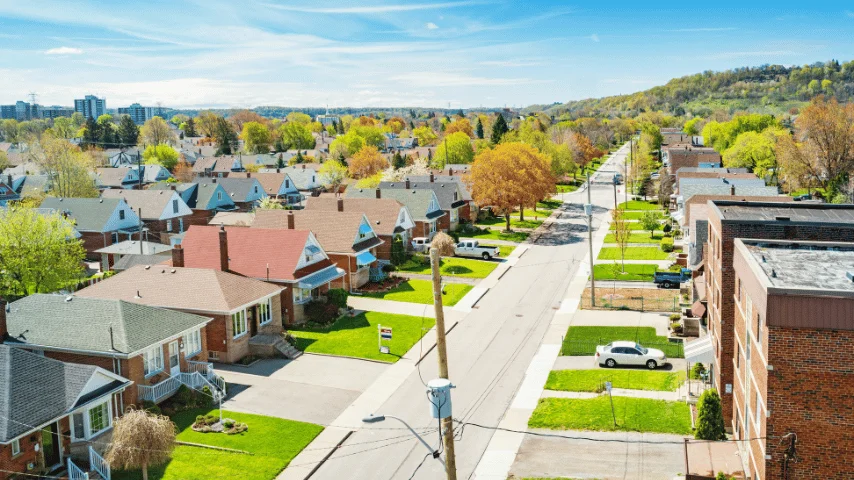Toronto stands tall in the heart of Canada, but so do its soaring house prices, creating a monumental challenge for aspiring homeowners. Over the past decade, the average house price in Toronto has surged, reshaping the city’s demographic landscape. Let’s delve into the intricacies of Toronto’s real estate dilemma.
Toronto’s Skyrocketing Prices
Toronto, Canada’s most populous city, grapples with housing unaffordability. The average house price has experienced an unprecedented surge, exerting financial pressure on residents. This surge doesn’t stay confined within Toronto’s borders; its ripple effect extends to neighbouring regions, compelling many to explore more affordable housing options further away.
Hamilton’s Ascent in Housing Costs
Following Toronto’s trajectory, Hamilton once considered a more affordable alternative, now faces a steep incline in housing prices. Positioned as a secondary option for those priced out of Toronto, Hamilton witnesses an influx of residents, subsequently driving up its housing costs. Let’s unravel the dynamics of Hamilton’s real estate market.
The Hamilton Dilemma
Hamilton’s housing market echoes Toronto’s challenges, presenting a barrier to homeownership for many. As a consequence of Toronto’s unaffordability, Hamilton becomes an attractive alternative, yet the surge in housing demand escalates costs. The city finds itself grappling with the dual impact of housing unaffordability and increased demand.
Kitchener-Waterloo’s Double-Edged Sword
Moving beyond Toronto and Hamilton, Kitchener-Waterloo grapples with its own set of challenges. The tech industry boom in this region brings employment opportunities but simultaneously contributes to escalating housing demands and prices. Let’s dissect the complexities of Kitchener-Waterloo’s real estate scenario.
Tech Boom’s Impact
Kitchener-Waterloo’s tech surge, while fostering economic growth, intensifies the real estate struggle. Rising prices make homeownership an elusive dream for many residents, creating a delicate balance between prosperity and affordability.
London’s Transition from Affordability
London, once synonymous with reasonable housing, is undergoing a transformation. The surge in real estate prices is, in part, fueled by individuals relocating from more expensive cities. Let’s explore how London is navigating its changing real estate landscape.
London’s Paradigm Shift
Once celebrated for its affordable housing market, London now grapples with the challenges of rising prices. Individuals seeking respite from the higher costs of metropolitan living contribute to London’s real estate evolution.
Beyond Homeownership: Unpacking Broader Implications
Ontario’s real estate challenges extend far beyond the desire for homeownership, manifesting in various societal implications.
Economic Disparities: A Growing Gulf
The widening wealth gap between affluent and middle-to-low-income families intensifies, creating economic disparities that have the potential to foster social discord.
Demographic Shifts: The Changing Face of Communities
Soaring real estate prices trigger a demographic shift, with young families and professionals either seeking refuge in more affordable regions or deferring homeownership. This shift has the potential to influence the diversity and vibrancy of communities.
Renting vs. Owning: A Paradigm Shift
The shift from owning to renting becomes increasingly apparent, with a significant number of individuals opting for rental arrangements due to the prohibitive costs of home buying. This transition alters long-term financial stability and asset accumulation for these individuals.
Infrastructure Strain: The Unseen Burden
The influx of individuals migrating to peripheral cities in pursuit of affordability strains infrastructure and services, necessitating a re-evaluation of urban planning strategies.
Navigating Ontario’s Housing Affordability Quandary
Ontario’s housing affordability challenge is a multifaceted dilemma with profound implications. Addressing this issue demands a comprehensive approach, including policy adjustments, urban planning revisions, and, perhaps, a cultural shift in the perception of homeownership. As we unlock solutions, Ontario charts its course toward a more equitable and sustainable real estate future.


Be First to Comment